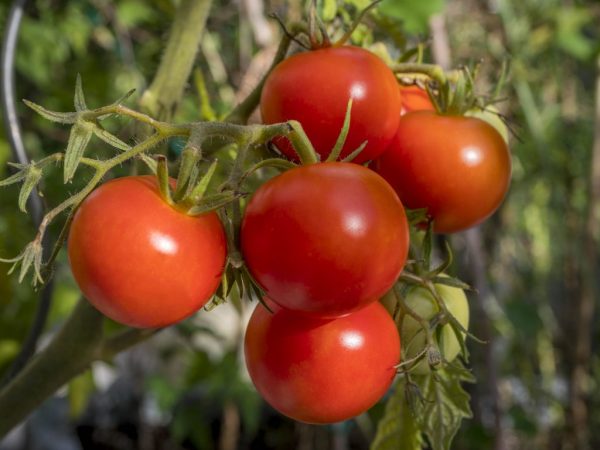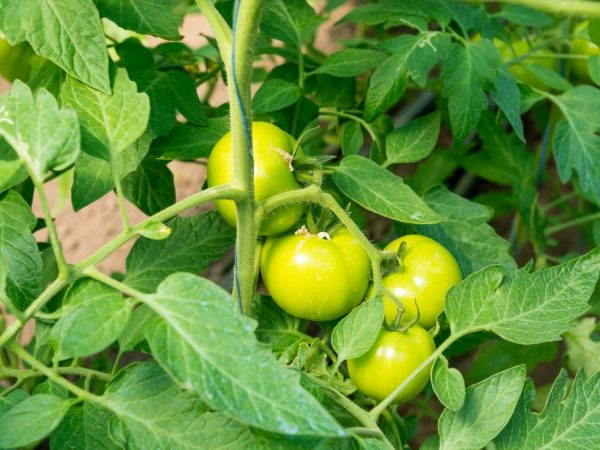Description of the variety of tomatoes Polbig
Tomato Polbig of the F1 category is especially popular due to its early ripening fruits. They ripen before late blight begins to develop. As a result, farmers are able to supply selected tomatoes to the vegetable market as early as possible.

Description of the variety of tomatoes Polbig
Variety characteristic
The hybrid was developed in Holland. Polbig tomatoes belong to the F1 category and are distinguished by their quick ripening. According to the description, the growing season is 90 days. High yield characteristics are observed: it is possible to collect up to 5 kg of tomatoes from one bush.
The variety is suitable for growing in all regions of the country. In warm climatic conditions, the culture is grown in the open field, in cold climates in a greenhouse.
Tatiana Orlova (Candidate of Agricultural Sciences):
There are varieties of tomato for amateur vegetable growing. Tomato Polbig is a hybrid designed for professional farmers - vegetable growers. This does not mean that this plant is difficult to care for and only professionals can grow it. There is such an economic concept as marketability of a product: appearance, uniformity (equal size) of fruits, transportability, keeping quality. Polbig is a tomato with a high percentage (up to 90%) of marketable fruits.
Description of the bush
According to the description, the bush belongs to the determinant type, its height is 60-80 cm. It has a moderate foliage and large saturated green leaves.
Tatiana Orlova (Candidate of Agricultural Sciences):
Since the main areas occupied by tomatoes are located in our country in regions with hot summer conditions, one of the main requirements for the variety is drought resistance and good shelter from the sun due to large leaves or powerful leaf apparatus.
Description of the fetus
Polbig F1 fruits have a number of characteristics:
- flat-round shape of the fruit;
- slight ribbing;
- deep red color;
- weight up to 130 g when grown in the open field and up to 200 g when grown in a greenhouse.
All tomatoes of this type are suitable for transportation. Farmers can transport the harvested crops long distances without worrying about the fruit cracking.
According to the characteristics, the fruits have a rich sweet taste with a slight sourness. The amount of dry matter is about 4.5%.
Growing rules

Good Care Provides Delicious Fruit
The cultivation of this tomato variety has the same features as other early maturing varieties.
Soil preparation
Planting in open ground or in a greenhouse in a permanent place should be carried out only by the seedling method. First, prepare the soil. It is best to do this in the fall using organic matter (humus, peat or wood ash). This is done so that the soil can absorb all the nutrients needed by the root system.
Sowing seeds
Seeds for seedlings are sown in the last days of March. A separate container is used for each plant.The seeding depth should be about 1 cm. It is best to use a neutral or low alkaline soil. After sowing, the seeds are placed in a warm, shaded place. When a pair of true leaves appears, a pick is made.
Transplanting
Planting in a permanent place is carried out when the seedlings reach 60 days of age. Before transplanting, a complex of mineral fertilizers and superphosphate are introduced into the hole. This allows the root system to develop faster. Fruit formation is faster if you use Kemira fertilizers or Solution. Before using them, you should read the instructions.
Tatiana Orlova (Candidate of Agricultural Sciences):
In order not to burn the root system of seedlings from contact with fertilizers, the fertilizer granules in the planting hole should be mixed with the soil and spilled with water.
Plant care
Growing tasty and healthy fruits is only possible if the seedlings are properly looked after during their growing season.
First of all, you need to remember about proper watering. It is carried out with warm water as the soil dries up. This usually happens once a week. The soil should not be flooded with water or overdried: this leads to the occurrence of root rot.
After each watering, the soil is loosened and all grown weeds are removed. It is also recommended to mulch the soil in a timely manner using humus and straw: this allows oxygen to better penetrate into the soil.
Top dressing should include both mineral and organic matter. As an organic matter, it is advisable to use humus, which has a sufficient amount of nutrients. Of the mineral components, preference should be given to phosphorus and potassium. These products accelerate the development of the bush and lead to the formation of large fruits.
Pests and diseases
Root rot, powdery mildew and late blight are the main diseases of tomatoes. To prevent their development or heal the plant, special substances should be used. Drugs Tabu or Klimazol will help in the fight. They also use folk remedies consisting of a solution of hydrogen peroxide, manganese or onion husks.
The main insect pests of tomato are the Colorado potato beetle, aphids and whiteflies (only in greenhouse conditions). Regent is the best way to fight the Colorado potato beetle. Aphids are removed using the preparations Biotlin, Fitoverm, whitefly — Inta-VIR, Rovikur, fufanon.
Conclusion
Breeders are trying to develop new varieties of tomatoes that are unpretentious in care. Growing a Polbig F1 tomato will allow you to spend less time and effort on caring for the plant.



